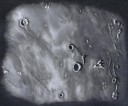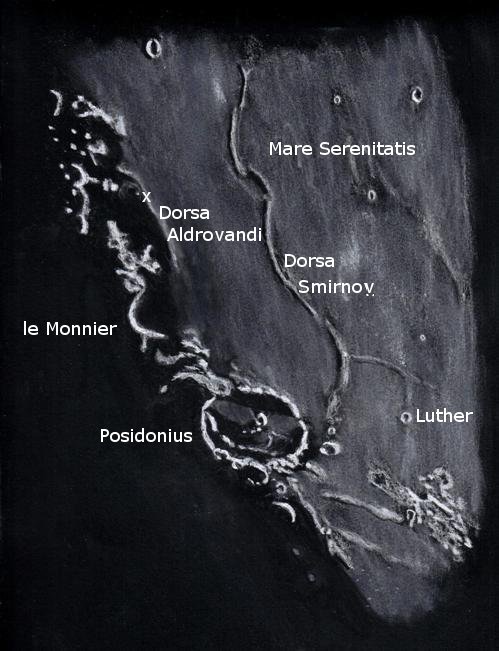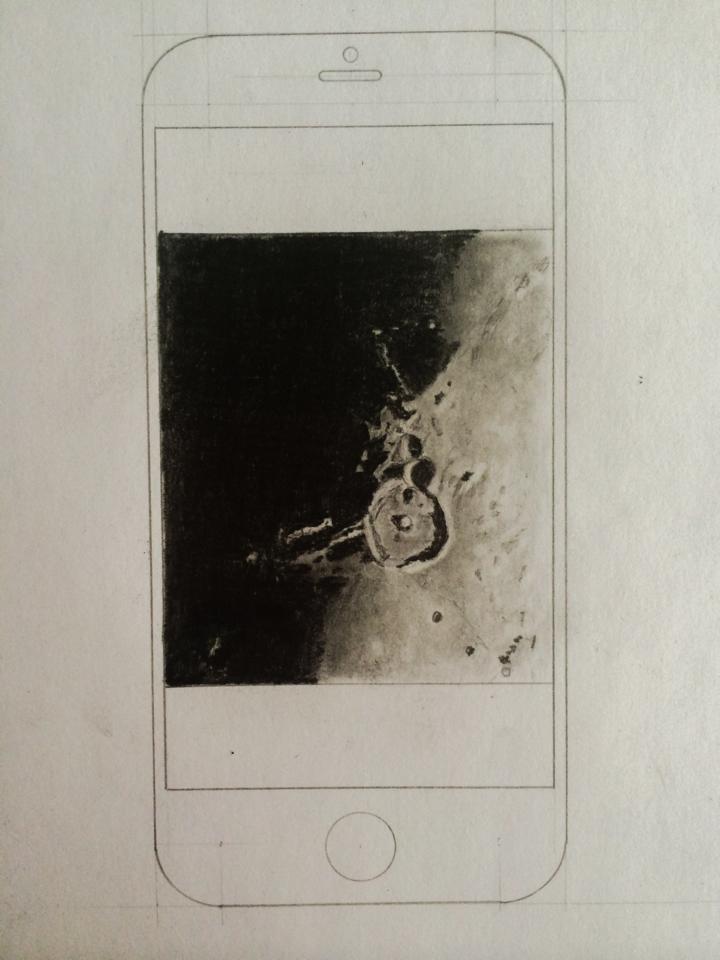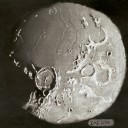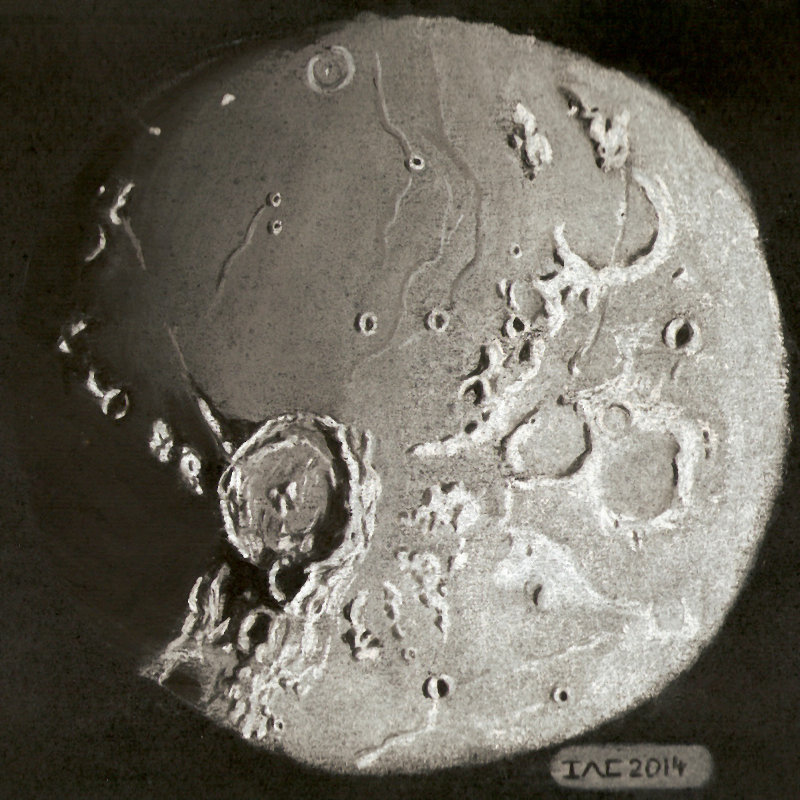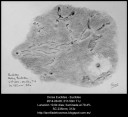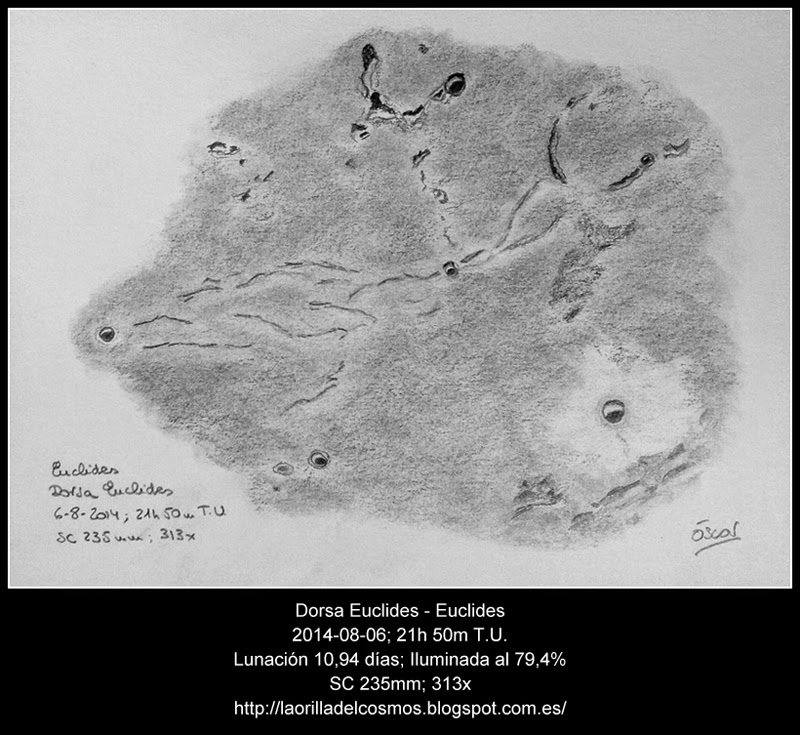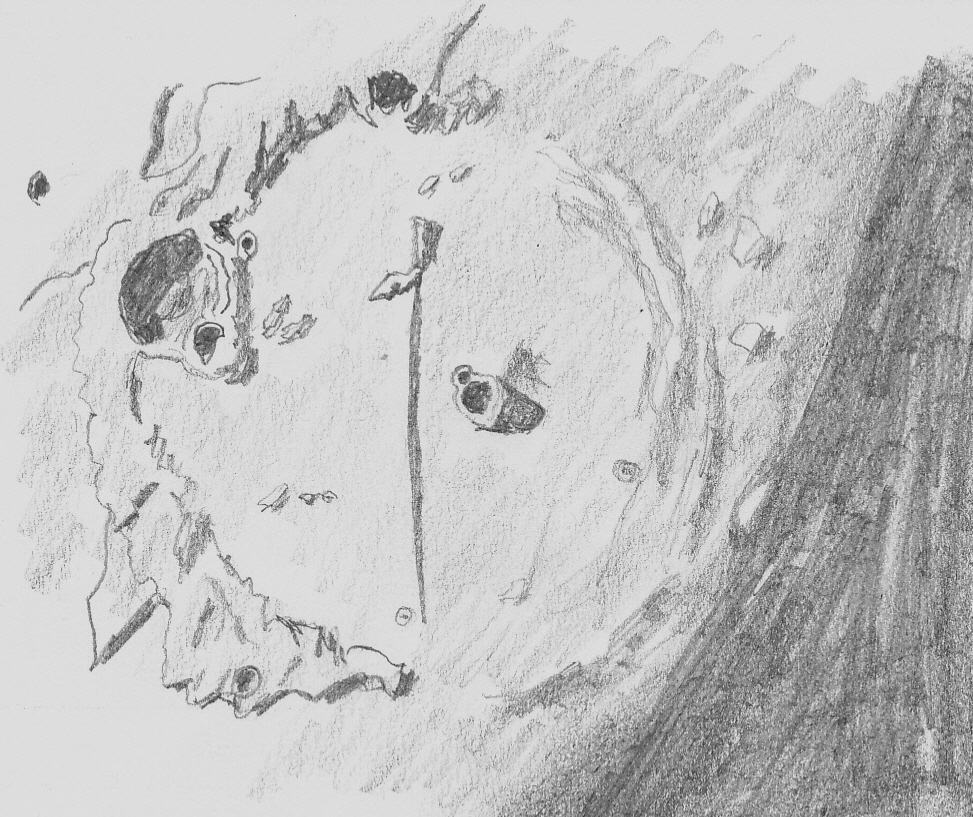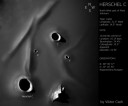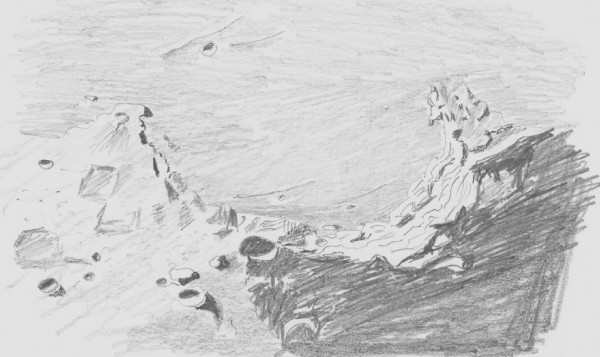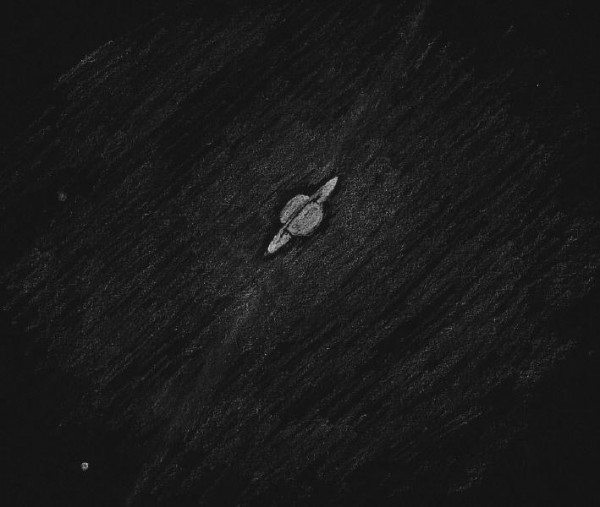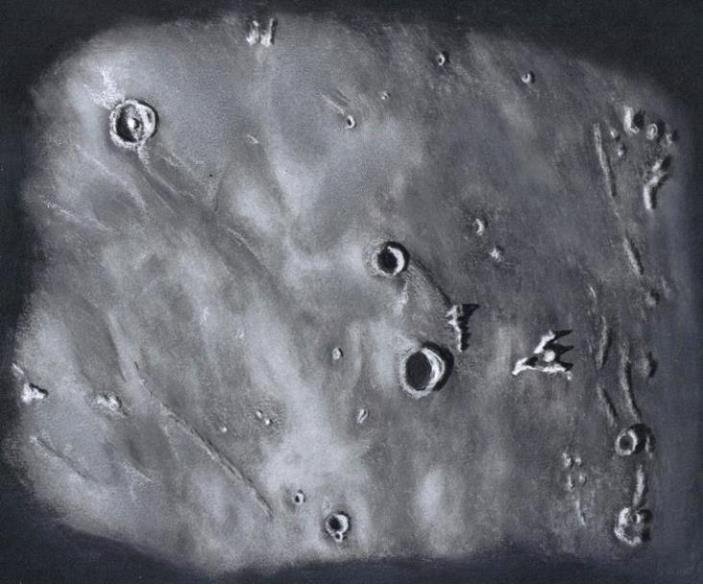

On the western side of Mare Imbrium are craters Diophantus (19 km.) and Delisle (25 km.) with mons Delisle in between and closer to the crater of the same name. A dorsum or ridge here is perhaps a buried crater rim and creates a sharp edge curving demarcation on the terminator side of the Moon at the time of sketching. Some of the massifs in this region such as mons La Hire (1.5 km. high), mons Vinogradov (1.4 km.) and mons Delisle( 0.8km. high) are described by some geologists as likely left over remnants from the rings of the Imbrium impact. Additional craters seen at this observation included Euler (2.8 km.), Artsimovich (9 km.), Gruithuisen (17 km.) and Heis (15 km.)and numerous smaller unnamed.
Sketching:
For this sketch I used: black Strathmore 400 Artagain paper, 9”x 12”, white and black Conte’pastel pencils, a soft charcoal pencil, brush and a blending stump.
Telescope: 13.1 inch f/6 Dobsonian and 9mm eyepiece 221x
Date: 01-31-2015, 03:10 – 04:25 UT
Temperature: -7°C (20°F)
clear, breezy
Seeing: Antoniadi III
Co longitude: 38.7°
Lunation: 10.33 days
Illumination: 84.9 %
Phase: 45.8°
Frank McCabe
